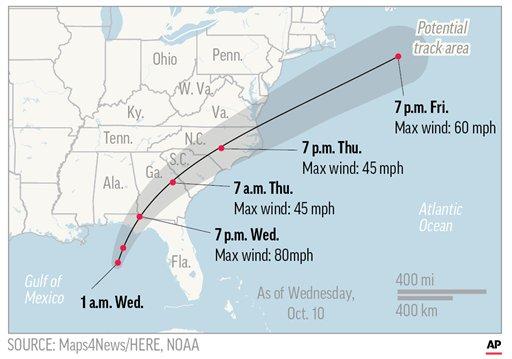The National Hurricane Center said Hurricane Michael has weakened to a tropical storm as it moves across Georgia on Oct. 11.
Michael moved through the City of Thomasville and was blasting wind speeds of up to 60-70 mph, although it is forecast to continue slowing down.




